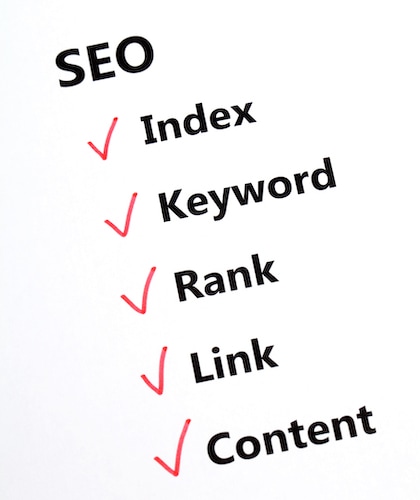Being successful online involves a series of very specific actions that all fall within the same strategy. These include making quality content that is not only well-written but also interesting to the audience. Their goal, in fact, is to generate site traffic and acquire new customers.
Doing so is not easy and requires in-depth expertise, so much so that it often involves multiple professionals such as the copywriter, the content specialist and the SEO specialist who, together, form a winning team.
Definition of content marketing
What content marketing is perfectly explained by the Content Marketing Institute:
"A marketing technique aimed at creating and distributing relevant and valuable content to attract, acquire, and engage a clear and defined target audience-with the goal of driving customers to profitable action."
Once created, then, content must be used well. Not coincidentally, Bill Gates himself said “Content is king” especially on the Web, which, for most people, is the first and main source of answers to their questions. That is why content must be made not so much to sell as to attract the audience’s attention and create a relationship of extreme trust.
Content marketing: why it is important
Creating and publishing quality content offers many benefits, first and foremost SEO ranking on search engines. Consequently, if you want to find your brand among the top Google results again, investing in content becomes practically indispensable.
Providing more detailed information on the goals of content marketing is Mashable:
- Brand awareness: 69%
- New customer acquisition: 68%
- Lead generation: 67%
- Customer retention: 62%
Proposing new, original and quality content to your audience, therefore, can result in generating more leads and, consequently, more customers. It should be kept in mind that, especially in recent years, users are inundated with advertising messages that reach them through different platforms, both online and offline. In order to stand out, it is crucial to provide them with something different, something that makes them choose their own solution rather than someone else’s.

That said, it becomes apparent how important content marketing can be, and there are 3 main reasons why you should never do without it:
- create interest: the market now is a conversational tool. Users get annoyed when they are interrupted by messages and/or information that are not among their interests, while they are attracted to advice and solutions that can create a relationship with a brand that goes beyond a purchase;
- communicate its values: it does not matter how big the company is, as long as it is able to convey its value through, precisely, purpose-made content. You have to provide a budget to invest on Google Ads and social campaigns to be coupled with a sound content marketing strategy;
- engage the audience: turning potential customers into leads and then into loyal buyers is a good mechanism for spreading the word and growing your business. In addition, a customer who is made a part of a brand’s news and daily life feels involved and will be much more likely to continue following its updates.
Content marketing, therefore, may be the best tool any company has at its disposal to make itself known and offer its customers something beyond the simple buying process. In essence:
- improves search engine rankings;
- attracts the attention of prospects;
- invites people to leave their contacts, to be turned into leads;
- create interest around the product and the company as a whole;
- make communities composed of members with all the same interests.
All these valid reasons should be able to convince even the most skeptical entrepreneur of the indispensable potential of content marketing.
How to implement a performing content marketing strategy
So far, the effectiveness of content marketing has been established, but it is important to keep in mind that in order to achieve noticeable and lasting results, it is essential to provide a strategy that includes several actions that work together.
To make a performing content strategy, you can start by answering 4 questions:
- what goals are intended to be achieved?
- who are the buyer personas?
- how do you plan to involve them?
- what are the KPIs and how are you going to measure them?
Going in order, then, the strategy should follow the following points:
- define feasible and precise strategic goals so that a clear path can be designed for the various prospects to follow;
- define buyer personas, that is, the ideal audience to whom you want to get your message across;
- figure out how to create valuable content that can engage buyer personas by offering information of interest to them;
- create a detailed editorial plan, start publishing, and establish KPIs (Key Performance Indicators) by which to measure data and optimize the content strategy.
This outline can be very useful for anyone who wants to kick-start their content marketing strategy by involving all relevant professionals and putting in place a team effort that gets straight to the point.
Content marketing and SEO
The content to be produced must therefore be of excellent quality and able to provide interesting information to the audience, but this is not enough: it must walk hand in hand with SEO. Optimizing a text with this in mind involves not only inserting the correct keywords or doing link building, but also and above all focusing on the originality and usability of the chosen topics.
Simply put, SEO is a technique for getting search engines to read and index as many pages of a site as possible in order to move up the results list, aspiring to the first page. To be performant, SEO cannot do without the following activities:

Backlinks
Backlinks are external links pointing to another site, usually an official one (such as news outlets), that lend reliability and relevance of content. Not all backlinks have the same value to Google, which relies more on their relevance and authority and not on the amount of referral links to the site.
Anchor Text
External links should be linked to a specific keyword or anchor text that directs to the content of a specific site.
Meta description
To optimize a page for SEO the meta description is indispensable: it consists of a string of text that the search engine uses to describe the result given to the user and aims to increase the CTR (Click Through Rate, which is the ratio of those who view the result to those who click on the link). Basically, it helps bring in genuinely interested users who browse through Google’s proposed web pages.
Persuasive copy
Persuasive copy refers to a mode of writing capable of increasing the conversions of a piece of content. It should not be confused with the sometimes inordinate use of sensationalist tones, emoji, call to action and other “tricks” that, at the end of the day, lead nowhere; on the contrary, persuasive copy must be original and so much personalized that it convinces the audience of the quality of a product/service. Its main goals are:
- engaging the reader by creating empathy;
- present merits and demerits of various solutions, trying to remain unbiased;
- help you consider all possible solutions to your needs;
- anticipate to the reader what they will find when they click on a particular call to action.
Google rewards persuasive SEO writing so much, since it satisfies users’ desire for knowledge.
Content marketing and editorial plan
A self-respecting content strategy must be planned and organized to the best of its ability and the best tool to get everything under control is the editorial plan, which contains within it all the content marketing activities to be applied on social, blog and website while defining objectives, tools, techniques and strategies to be used and frequency of publication.

Making a good, clear and comprehensive editorial plan proves very useful because:
- streamlines the work of each resource;
- helps to structure publications much better both on social and on the blog;
- allows for a broad and organized view of all content marketing actions performed over shorter or longer periods of time;
- enables urgent or unforeseen events to be handled quickly.
The editorial plan is, in practice, the first thing you need to do when creating an effective content strategy and it absolutely must include:
- goals: who should the content be aimed at?
- topics: what do you want to talk about?
- type of post: how should topics be presented to be interesting?
- publication timing: how often will individual content be published?
Predefined tools can be used to create, manage, monitor, and modify an editorial plan, or you can opt for a simple excel document that all resources involved can access. In any case, it must be structured as follows:
- date of publication
- title
- text
- tags and category
- keyword
- image
Having a well-defined editorial plan in place will make it much easier not only to implement the planned activities, but also to keep track of the entire strategy, having the ability to intervene at any time through changes, corrections and improvements.

